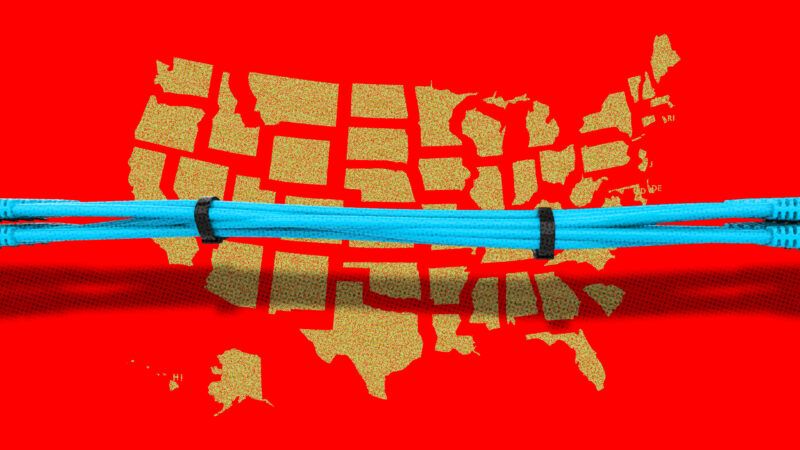Government Spending Billions To Expand Broadband but Can't Tell Who Needs It
The Federal Communications Commission uses broadband coverage maps that are so severely flawed, states started shelling out to make their own.

In November 2021, Congress passed and President Joe Biden signed the Infrastructure Investment and Jobs Act (IIJA), a $1.2 trillion grab bag of public spending wish list items. One of those projects, the Broadband Equity, Access, and Deployment (BEAD) Program, would expand broadband access to communities that currently lack access to high-speed internet. BEAD would dole out $42.45 billion in state grants, and the Government Accountability Office estimated that the projects could require as many as 23,000 additional telecom workers to complete.
The only problem is that the government currently has no idea where broadband actually is and is not available.
The government defines broadband as any high-speed internet connection that is always on without needing to dial up. According to the text of the IIJA, "Access to affordable, reliable, high-speed broadband is essential to full participation in modern life in the United States," especially in an era of remote work and Zoom schooling. As such, the law set out to bridge the so-called "digital divide" wherein some rural and low-income communities do not have easy broadband access.
To determine what areas need investment, the government relies on maps from the Federal Communications Commission (FCC). But despite costing $350 million, the FCC's maps are notoriously unreliable and have been for many years. In 2021, The Washington Post noted the maps are based on census data, so "if even one household in a census block—a statistical area that conveys population data—has broadband available, then the agency considers the entire group served. In rural areas, one block could cover dozens of square miles." The FCC's maps also don't take into account physical impediments, like trees and mountains, which can disrupt wireless signals.
As Karl Bode noted this week at Techdirt, the FCC's maps were so unreliable that multiple states took it upon themselves to draw up their own. Vermont determined that more than 18 percent of its residents lack broadband access, while the FCC's newly redrawn maps put Vermont's shortfall at only 3 percent.
Now, with more than $40 billion in state grants on the line, states are scrambling to challenge the new maps, which cost the FCC nearly $45 million in addition to the $350 million previously spent. Of course, the best option would be for the federal government to not have spent those billions in the first place and let states address their own needs: Before the passage of the infrastructure bill, Georgia not only made its own maps but partnered with Windstream to jointly spend $300 million expanding high-speed fiber internet access in the state.


Show Comments (35)